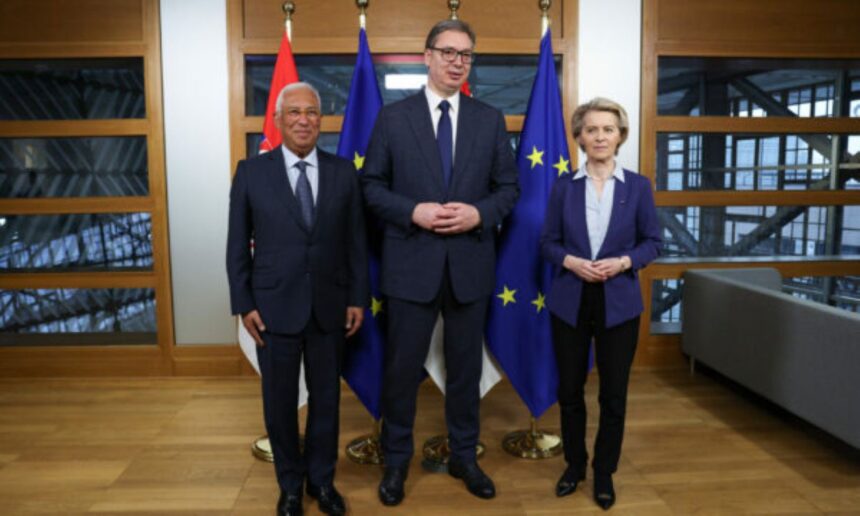During months of popular protests against the Serbian regime, the European Union has stubbornly supported President Aleksandar Vučić. But as peaceful demonstrations are met with increasingly brutal repression, the EU’s strategy is now at a crossroads: continue its transactional appeasement of Vučić, or embrace uncertainty—and the possibility of real progress.
Despite widespread violence, traffic blockades, and police crackdowns (including reports of officers from Republika Srpska assisting), the EU remains reluctant to take a decisive stand. On June 28, more than 100,000 Serbians rallied in Belgrade, but follow-up actions by the EU institutions and member states have lacked substance.
While student-led protests evolved into a broader civic movement and activists pressed the EU via symbolic bike rides and ultramarathons in Strasbourg and Brussels, top EU figures—including Commissioners Marta Kos and Glen Micallef—only responded rhetoric without real policy change.
Critics argue that Vučić is exploiting this “indulgent” EU approach, interpreting muted reactions as implicit approval to crush dissent and strengthen his ties with Russia and China.
The EU faces a dilemma:
- Continue transactional cooperation, securing short-term stability but legitimizing internal repression
- Pivot toward enforcing its democratic values, risking unrest but preserving credibility
The authors suggest Denmark’s EU Presidency should lead the charge, forging a coalition of member states to make EU accession conditional on genuine democratic reforms, not just alignment with foreign policy.
Inaction threatens more than Serbia—it endangers the EU’s entire project in the Western Balkans. Opting for “stability” now may entrench authoritarian patterns and cost the EU regional influence for generations.







